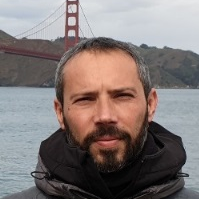New Frontiers of Multiscale Monitoring, Analysis and Modeling of Environmental Systems via Integration of Remote and Proximal Sensing Measurements
A special issue of Remote Sensing (ISSN 2072-4292).
Deadline for manuscript submissions: closed (31 July 2019) | Viewed by 63593
Special Issue Editors
Interests: geophysics; volcanology; geodynamic; remote sensing; SAR
Special Issues, Collections and Topics in MDPI journals
2. Instituto Tecnológico y de Energías Renovables (ITER), Granadilla de Abona, Tenerife, Spain
Interests: hydropedology; precision agriculture; crop adaptation to climate change
Special Issues, Collections and Topics in MDPI journals
Interests: electromagnetic scattering; radar imaging; ground penetrating radar; data integration; non-invasive monitoring tools
Special Issues, Collections and Topics in MDPI journals
Special Issue Information
Dear Colleagues,
This special issue aims to present recent results and advances in approaches to investigate and understand environmental systems, with a focus on the study of the interaction between environmental processes occurring at different scales.
These advances have paved the way to the design and implementation of multi-platform remote and in-situ sensing systems, and tools for surveillance and monitoring. In particular, special attention is devoted to the development of new techniques and integrated instrumentation for multiscale monitoring of areas affected by high natural risks, such as volcanic, seismic, slope instability and other environmental contexts.
We expect contributions where remote sensing is combined with and improved by other disciplines such as applied geophysics, seismology, geodesy, geochemistry, volcanology, geotechnical and soil science. Contributions reporting analytical and numerical modeling of environmental processes are also welcome. Finally, a special focus will be on multi-parametric analysis by integrating data acquired by remote sensing with other different sources, including the use of GeoWeb platforms.
Dr. Pietro TizzaniDr. Luca D’Auria
Dr. NemesioPerez
Dr. Antonello Bonfante
Dr. Francesco Soldovieri
Guest Editors
Manuscript Submission Information
Manuscripts should be submitted online at www.mdpi.com by registering and logging in to this website. Once you are registered, click here to go to the submission form. Manuscripts can be submitted until the deadline. All submissions that pass pre-check are peer-reviewed. Accepted papers will be published continuously in the journal (as soon as accepted) and will be listed together on the special issue website. Research articles, review articles as well as short communications are invited. For planned papers, a title and short abstract (about 100 words) can be sent to the Editorial Office for announcement on this website.
Submitted manuscripts should not have been published previously, nor be under consideration for publication elsewhere (except conference proceedings papers). All manuscripts are thoroughly refereed through a single-blind peer-review process. A guide for authors and other relevant information for submission of manuscripts is available on the Instructions for Authors page. Remote Sensing is an international peer-reviewed open access semimonthly journal published by MDPI.
Please visit the Instructions for Authors page before submitting a manuscript. The Article Processing Charge (APC) for publication in this open access journal is 2700 CHF (Swiss Francs). Submitted papers should be well formatted and use good English. Authors may use MDPI's English editing service prior to publication or during author revisions.
Keywords
- remote sensing
- multiscale monitoring, data analysis
- modelling of environmental system
Benefits of Publishing in a Special Issue
- Ease of navigation: Grouping papers by topic helps scholars navigate broad scope journals more efficiently.
- Greater discoverability: Special Issues support the reach and impact of scientific research. Articles in Special Issues are more discoverable and cited more frequently.
- Expansion of research network: Special Issues facilitate connections among authors, fostering scientific collaborations.
- External promotion: Articles in Special Issues are often promoted through the journal's social media, increasing their visibility.
- e-Book format: Special Issues with more than 10 articles can be published as dedicated e-books, ensuring wide and rapid dissemination.
Further information on MDPI's Special Issue polices can be found here.








